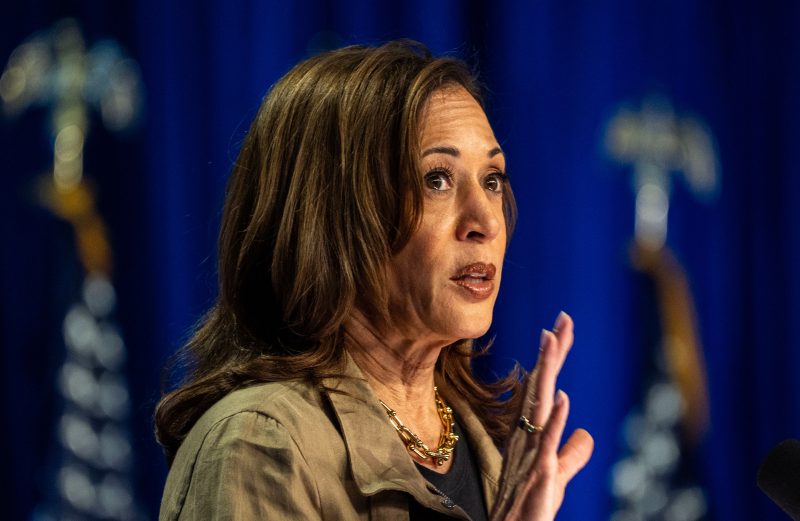In the realm of economic policy and border security, the stark contrasts between Vice President Kamala Harris and former President Donald Trump are impossible to overlook. Their differing approaches and ideologies have led to significant divisions in the way these critical issues are approached and tackled.
On the economic front, Harris embodies a more progressive stance, advocating for policies centered around social welfare and income equality. Her focus on infrastructure investments, affordable healthcare, and education underscores her commitment to addressing systemic inequalities and expanding economic opportunities for all Americans. In contrast, Trump’s economic agenda prioritized deregulation, tax cuts, and protectionist measures aimed at bolstering specific industries and boosting economic growth. His America First rhetoric resonated with a segment of the population that felt left behind by globalization and called for a stronger emphasis on domestic production and job creation.
The fundamental differences in their economic philosophies have profound implications for the nation’s economic landscape. While Harris’ approach seeks to address inequalities and promote social mobility, Trump’s policies were geared towards stimulating economic growth and prioritizing corporations and job creation. The contrasting ideologies have left a lasting impact on key economic indicators such as employment levels, income distribution, and investment patterns. The direction taken by the current administration will undoubtedly shape the economic trajectory of the country in the coming years.
Moving on to the issue of border security, Harris and Trump offer diametrically opposing views on how to address this complex and multifaceted challenge. During his tenure, Trump’s policies focused heavily on border enforcement, including the construction of a border wall and strict immigration restrictions aimed at curbing illegal crossings. His zero-tolerance approach also included measures such as family separations and increased deportations, which generated significant controversy and backlash both domestically and internationally.
In contrast, Vice President Harris has positioned herself as a proponent of a more compassionate and holistic approach to border security. Her emphasis on addressing root causes of migration, investing in diplomatic solutions, and improving conditions in sending countries represents a departure from the enforcement-heavy strategies pursued by the previous administration. By promoting a more nuanced and inclusive approach to managing migration flows, Harris aims to foster cooperation and understanding while upholding the values of compassion and human rights.
The divergent perspectives of Harris and Trump on border security reflect broader debates around national security, immigration, and human rights. While Trump’s hardline stance resonated with a segment of the population concerned about border security and sovereignty, Harris’ more nuanced approach reflects a growing recognition of the interconnectedness of global challenges and the need for comprehensive, sustainable solutions. The ongoing discussions around border security will continue to be a contentious and complex issue, with different stakeholders advocating for diverse and sometimes conflicting strategies.
In conclusion, the contrasting approaches of Vice President Kamala Harris and former President Donald Trump on the economy and border security underscore the ideological divisions that shape contemporary American politics. While Harris pursues a progressive economic agenda and a comprehensive approach to border security, Trump’s policies were characterized by a focus on deregulation, tax cuts, and enforcement-heavy border control measures. The enduring legacy of their respective approaches will continue to influence policy debates and shape the direction of the nation on these critical issues.

